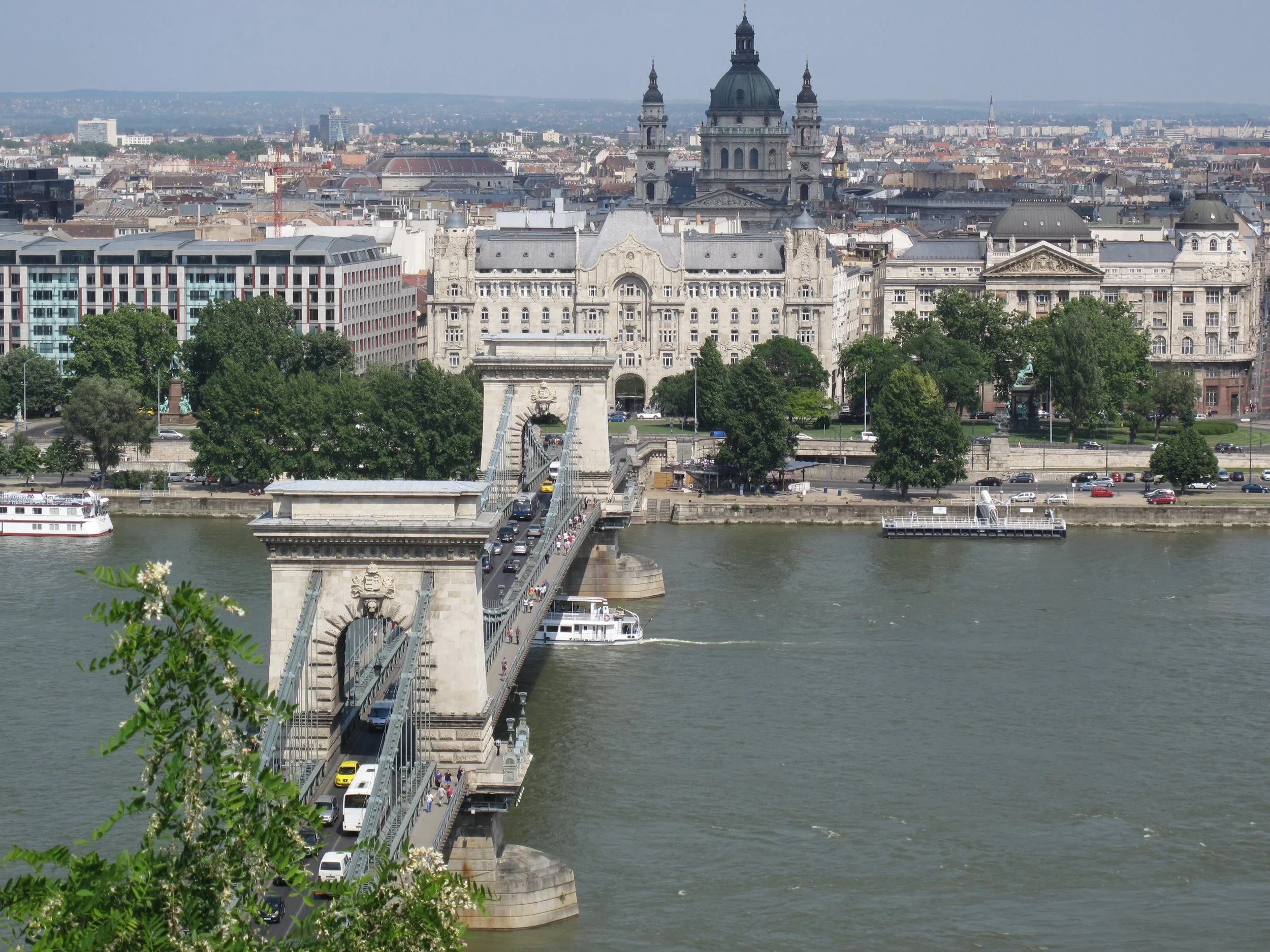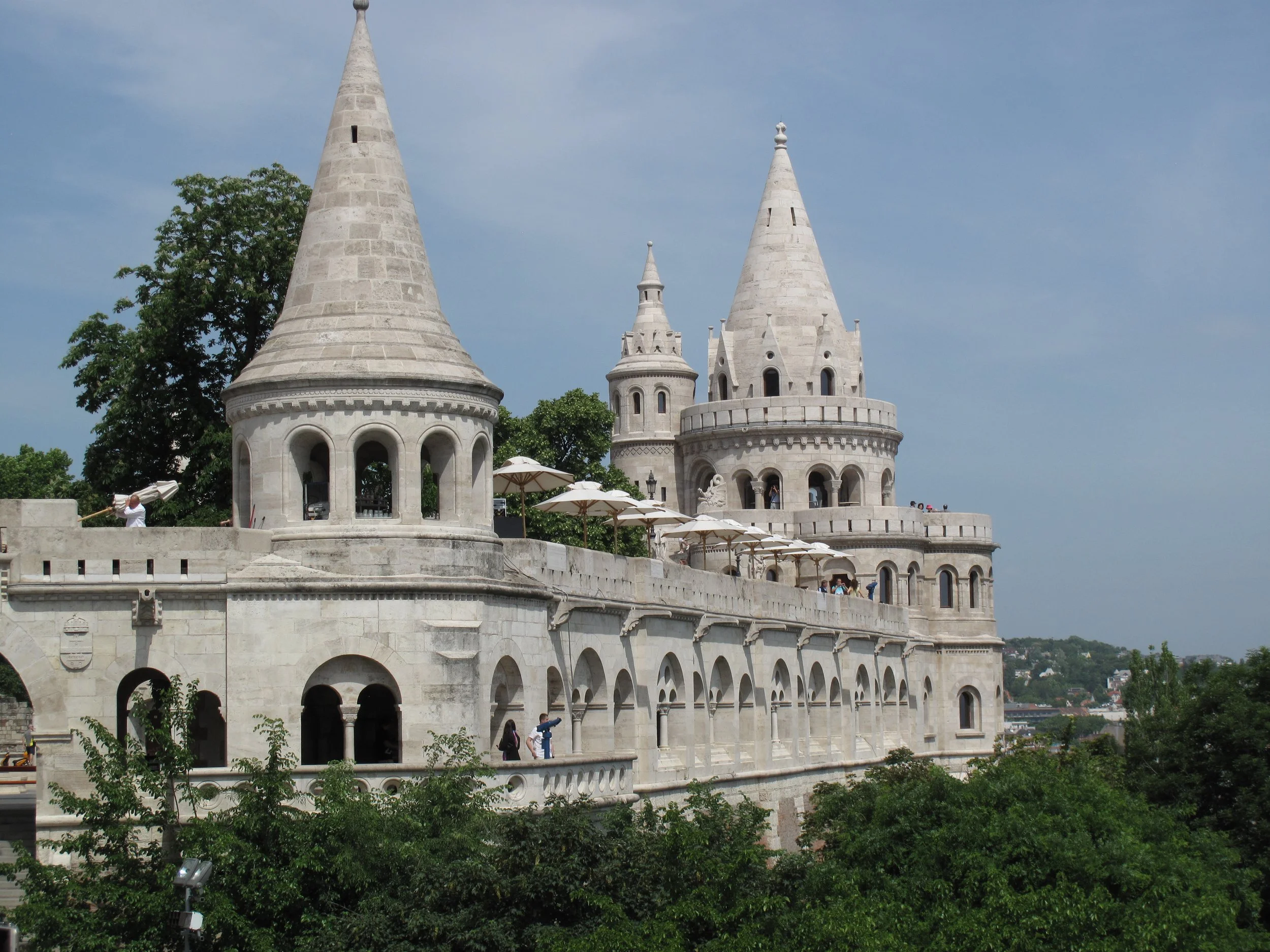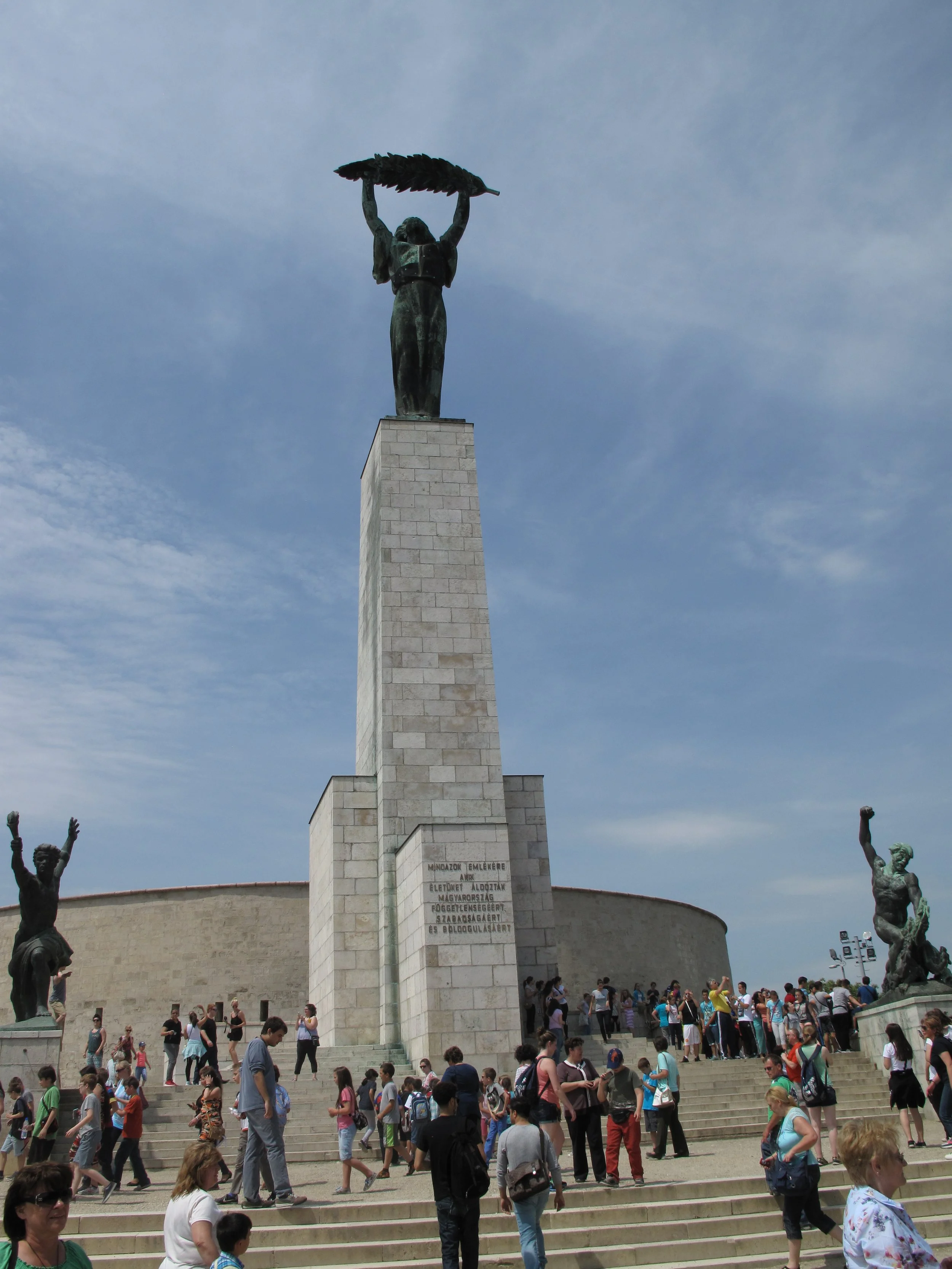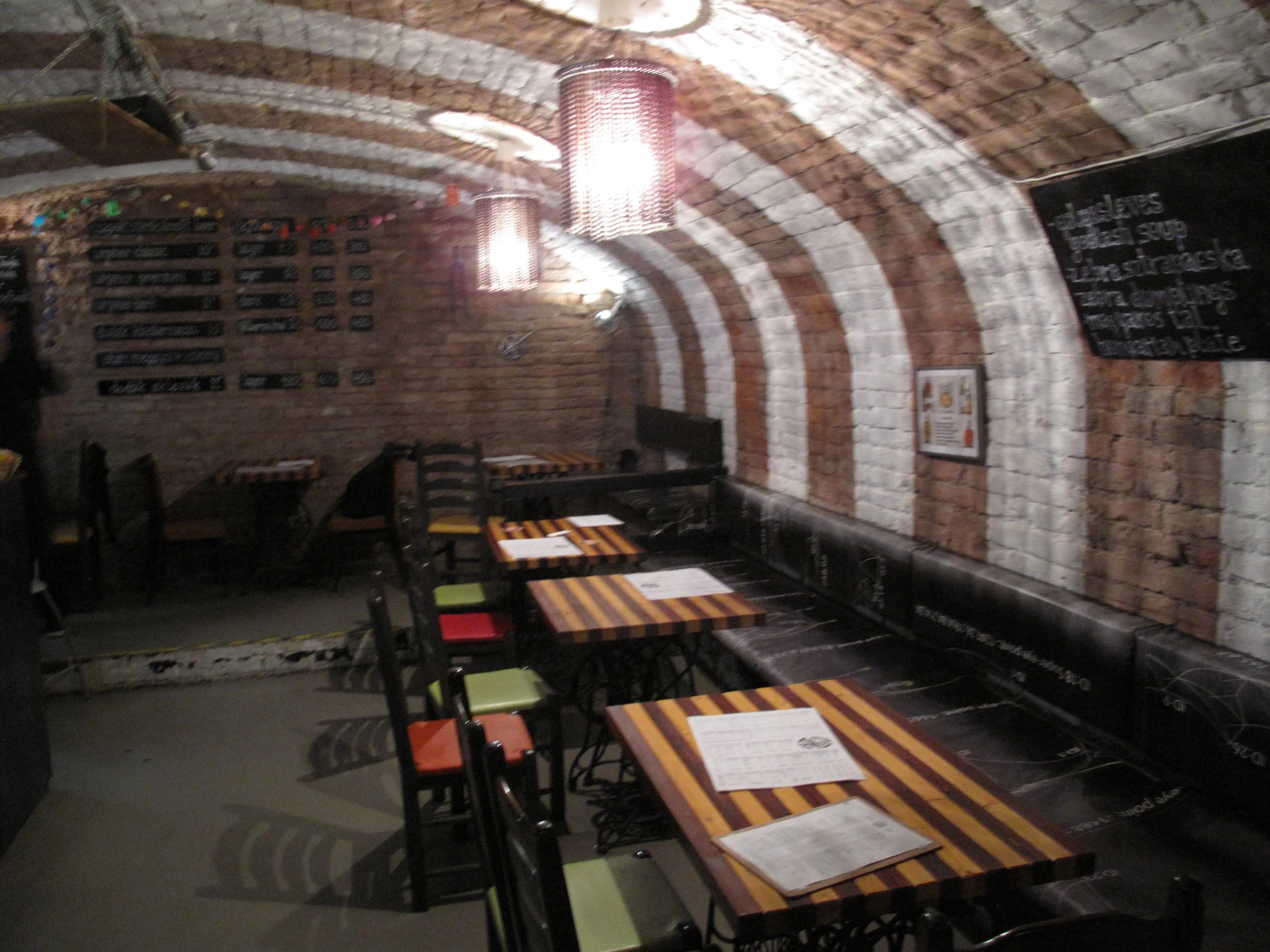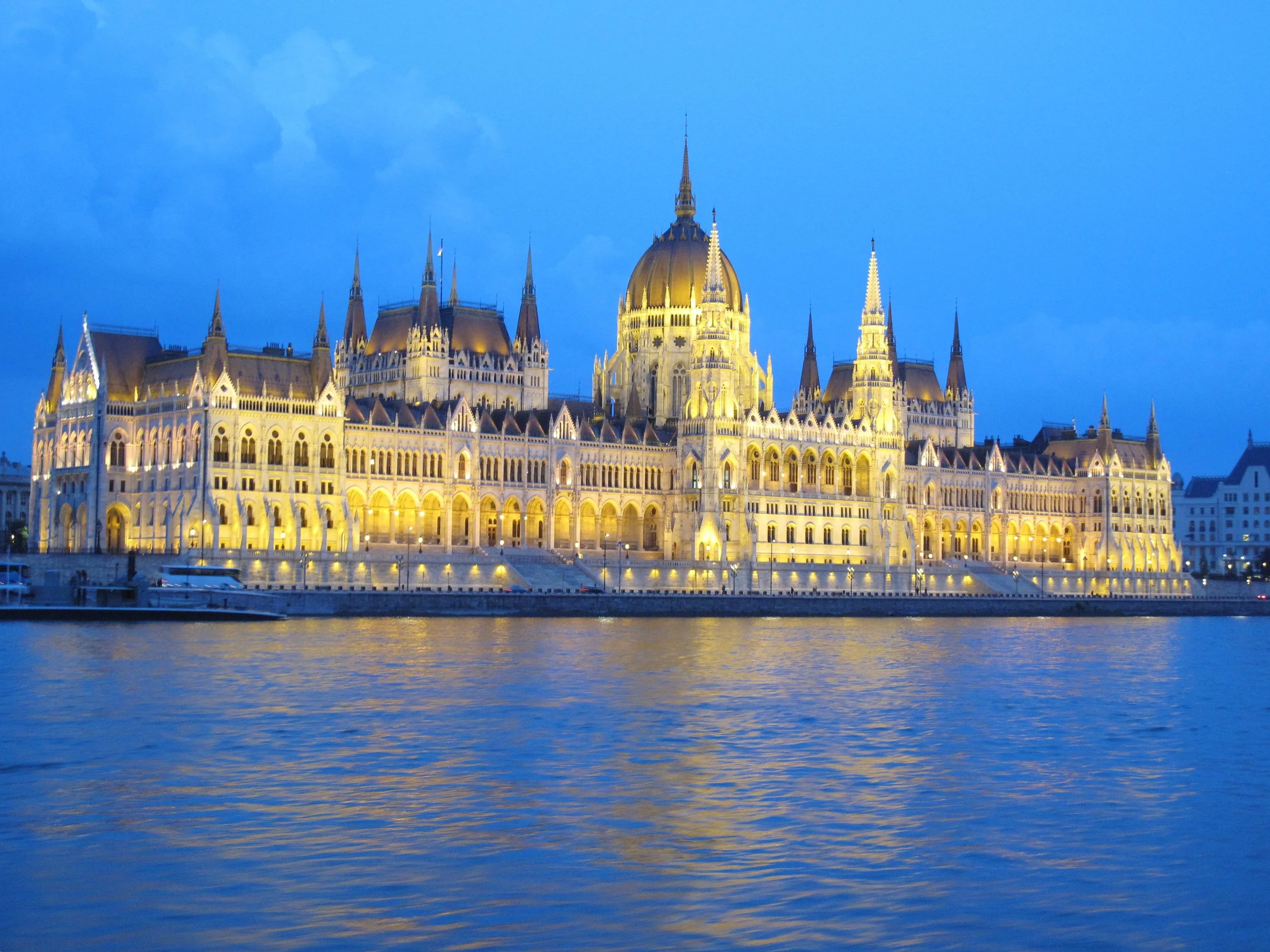Hungary. Buda and Pest: Twin Cities of the Danube
Growing up during the Cold War, I was taught that there was good (western) Europe and bad (eastern) Europe. While everyone had friends and relatives who had been to Paris, London, or Rome, I didn’t know anyone who had visited bad (communist) Europe. Hungary was my first trip to Eastern Europe and my second (after Mongolia) to a former Soviet Bloc country. Stereotypes and preconceptions are difficult to set aside, so I was surprised that Budapest was anything but drab and dismal. Hungary’s capital and largest city (1.7 million), Budapest is also known as “Queen of the Danube.” It is located where the hills of western Hungary meet plains that extend south and east. The oldest part of the city has two parts, Buda which was built on a hill west of the Danube River and Pest which spreads outward on more level ground on the Danube’s east bank.
Arriving in the 1st century AD, Celtic tribes were first to build on the city’s present-day location. They were followed by Romans who built a town called Aquincum. Towards the end of the 9th century the region was occupied by Magyar tribes who had migrated westward from the Ural Mountains. Founded by Hungarian King Béla IV after the Mongol Invasion (1241-1242), Buda expanded with the addition of Gothic-style houses, cobblestone streets, and a royal palace positioned on a hill above the Danube. Beginning in the late 18th century, Pest’s population grew rapidly as it evolved into the nation’s administrative and economic center. Buda was conquered several times by Ottomans who occupied the city for 150 years and built public structures including the Rudas Baths. A multinational Christian army reconquered the city in 1686. In 1867 Hungry became part of the Austro-Hungarian Empire under a single monarch and six years later Buda and Pest, along with Obuda (Old Buda), merged to form the city of Budapest. The 20th century brought watershed events such as a 1956 demonstration against the communist regime that was met with a show of force by Soviet tanks. Hungary finally received its independence in 1989 and soon after, multiparty elections were held. The last Soviet troops withdrew in 1991.
From the airport we drove to Pest with a stop at Hero’s Square, one of the city’s four major public areas. On its west side, Millennium Monument features statues of seven Magyar chieftains and other Hungarian leaders. Hero’s Square has one of the city’s metro stations. Opening in 1896, Budapest’s subway is the world’s second oldest in the world after the City and South London Railway, completed in 1890.
Although it’s possible to ride public transportation, we elected to cross the Danube from Pest to Buda on foot using the Chain Bridge (aka Széchenyi Bridge). Opening in 1849, the bridge was damaged by retreating German forces during a January 1945 siege when Budapest was encircled by Soviet and Romanian forces. Our first stop after crossing was Buda Castle (aka the Royal Palace). The castle’s interior is unique, with Muslim elements added during Ottoman rule. In 1686 the castle was severely damaged in a siege by Christian forces. The Baroque-style castle seen today dates from 1769 and was last remodeled in 1904 during the reign of Hapsburg ruler, Franz Joseph I. Today, the castle complex is an UNESCO World Heritage Site that houses the Hungarian National Gallery, Budapest History Museum, and Széchény Library. To the south is the Lady on the Hill, the city’s liberty monument. Constructed in 1947 on Gellért Hill, the monument honors the Soviet liberation of Hungary at the end of WWII.
After exploring the main floor, we toured a section of more than 10,000 meters of underground tunnels and catacombs created for the castle’s defense. From the castle’s main floor, we could see the Neo-Romanesque Fisherman’s Bastion with its 140-meter-long terrace. The bastion’s towers symbolize seven chiefs who founded Hungary in 895. It is believed that during the Middle Ages this part of the castle wall was protected by a guild of fishermen.
Returning to Pest, my companions and I visited a “ruin bar.” Located in mostly abandoned buildings, ruin bars are known for affordable beer, wine, and other cocktails that are served in spaces adorned with eclectic furniture and wall decorations. The city’s first ruin bar was opened in the Jewish quarter in 1999. The bar we visited had an odd assortment of chairs, none matching, and a bench seat from an old Volkswagen van. Elsewhere there was a rickety kitchen table and paintings that looked like they were purchased at a yard sale. That evening we took a cruise on the Danube. From our vantage point on the boat’s deck we could see the brightly illuminated Hungarian Parliament Building. Located on Kossuth Street and along the eastern bank of the Danube, the 268-meter-long Gothic style building opened in 1902. With two massive halls used by the National Assembly, it is the country’s largest building with 13 elevators, 29 staircases, and 691 rooms. An astounding 40 million bricks were used in the building’s construction.


